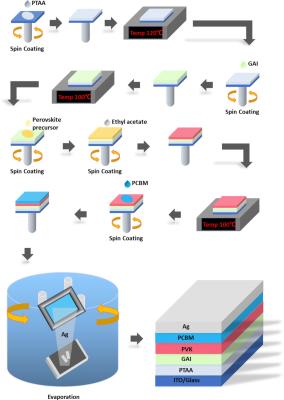Researchers use copper thiocyanate to develop efficient and stable perovskite-silicon tandem solar cells
Researchers from Zhejiang University, Soochow University, King Abdullah University of Science and Technology (KAUST), The Hong Kong Polytechnic University and Suzhou Maxwell Technologies have addressed common challenges related to hole transport layers that are commonly used for the perovskite top cells, such as defects, non-conformal deposition or de-wetting of the overlying perovskite on the textured silicon bottom cells.
The team decided to develop a strategy based on co-deposition of copper(I) thiocyanate and perovskite, where effective perovskite grain boundary passivation and efficient hole collection are simultaneously achieved by the embedded copper(I) thiocyanate, which creates local hole-collecting contacts. Fabricated monolithic perovskite/silicon tandem devices achieved a certified power conversion efficiency of 31.46% for 1 cm2 area devices.









